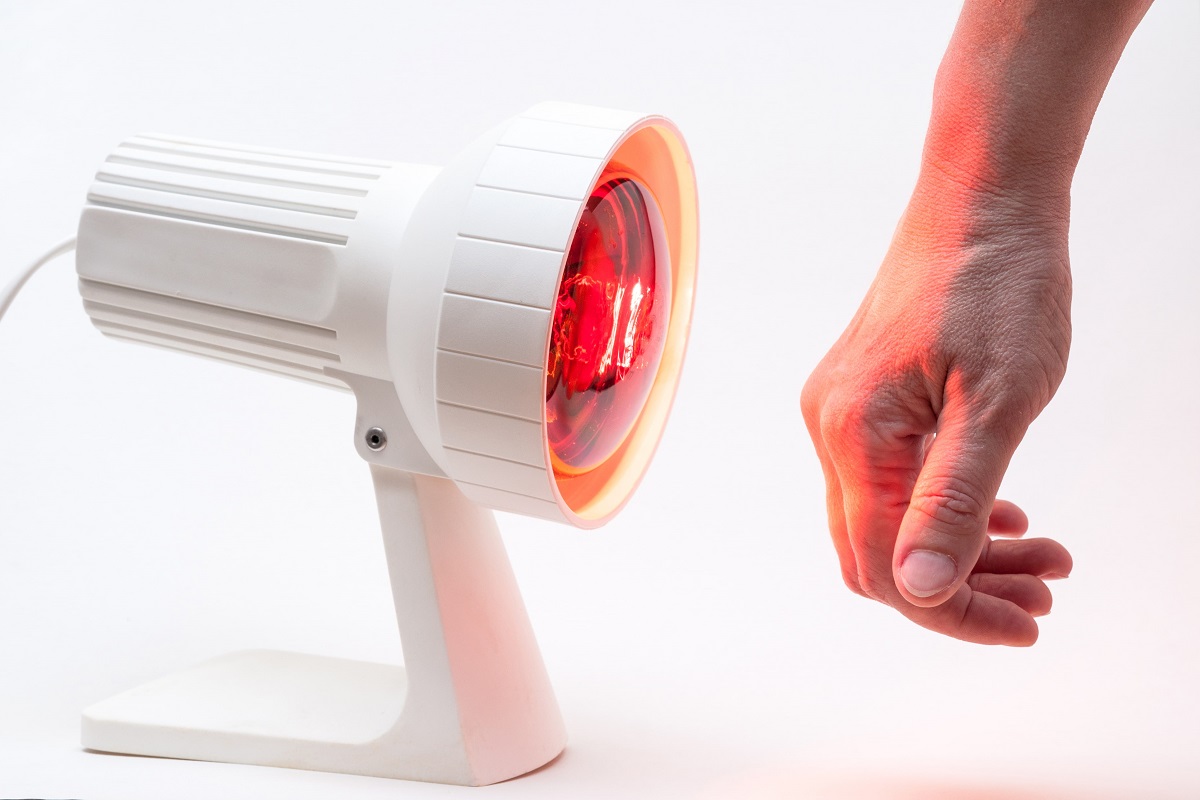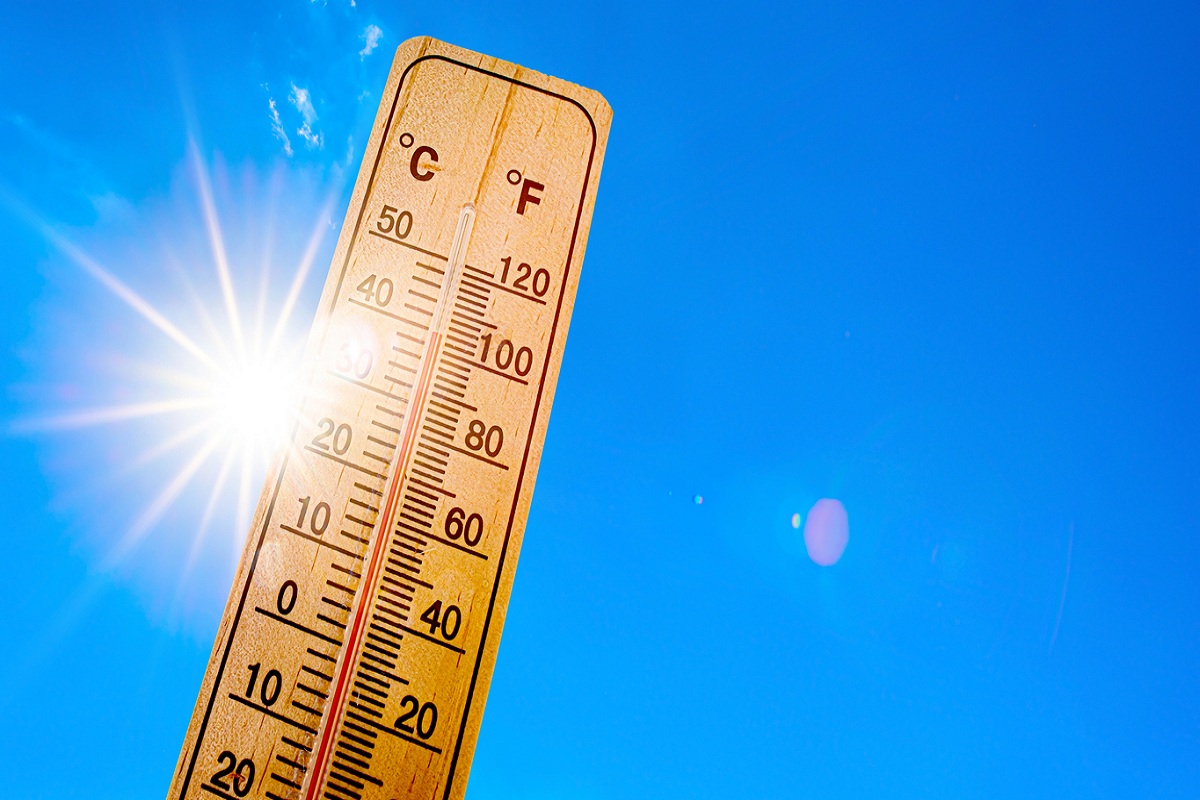Home>Science & Environment>Understanding Radiation: The Transfer Of Heat Explained


Science & Environment
Understanding Radiation: The Transfer Of Heat Explained
Published: February 19, 2024
Gain a clear understanding of radiation and heat transfer with our comprehensive guide. Explore the science and environmental impact of these crucial concepts.
(Many of the links in this article redirect to a specific reviewed product. Your purchase of these products through affiliate links helps to generate commission for Temperatures.com, at no extra cost. Learn more)
Table of Contents
The Basics of Radiation
Radiation is a fundamental concept in the realm of science and plays a crucial role in various natural phenomena and human-made technologies. At its core, radiation refers to the emission and propagation of energy through space or a material medium. This energy can take various forms, including electromagnetic waves and subatomic particles, each with distinct properties and behaviors.
Types of Radiation
Radiation encompasses a broad spectrum of phenomena, including electromagnetic radiation such as visible light, infrared radiation, ultraviolet rays, X-rays, and gamma rays. Additionally, it involves particle radiation, which involves the emission of subatomic particles such as alpha and beta particles, as well as neutrons. Each type of radiation possesses unique characteristics and interacts with matter in different ways, influencing its applications across diverse fields.
Natural and Artificial Sources
Radiation is omnipresent in our environment, originating from both natural and artificial sources. Natural sources include cosmic radiation from outer space, terrestrial radiation from the Earth's crust, and radiation from radioactive elements present in rocks and soil. On the other hand, artificial sources encompass a wide range of human activities, including medical procedures, industrial processes, and technological applications such as nuclear power generation.
Energy Transfer
One of the fundamental aspects of radiation is its role in energy transfer. When radiation encounters a material medium, it can impart energy to the atoms and molecules within the substance, leading to various effects such as heating or ionization. This energy transfer mechanism is pivotal in understanding the behavior of radiation in different contexts, from the warming of the Earth's surface by solar radiation to the sterilization of medical equipment using ionizing radiation.
Interaction with Matter
Radiation interacts with matter through a range of processes, including absorption, scattering, and transmission. These interactions depend on the properties of the radiation and the composition of the material it encounters. For instance, certain materials may absorb specific wavelengths of electromagnetic radiation, while others may allow radiation to pass through with minimal attenuation. Understanding these interactions is crucial in harnessing radiation for practical applications and ensuring safety in various scenarios.
In essence, grasping the basics of radiation provides a foundation for comprehending its diverse manifestations and applications in the natural world and human endeavors. By delving into the mechanisms of energy transfer, the sources of radiation, and its interactions with matter, we gain insight into a phenomenon that permeates our daily lives and underpins numerous scientific and technological advancements.
Read more: Different Types Of Heat Transfer
The Mechanism of Heat Transfer through Radiation
Radiation serves as a pivotal mechanism for the transfer of heat energy, playing a fundamental role in the thermal dynamics of various systems. Unlike conduction and convection, which rely on the physical movement of particles, radiation facilitates heat transfer through electromagnetic waves. This mechanism is particularly significant in scenarios where direct physical contact between objects is not feasible, such as the transmission of heat from the sun to the Earth or the thermal exchange between distant celestial bodies.
At its core, the process of heat transfer through radiation involves the emission and absorption of electromagnetic waves. When an object possesses thermal energy, it emits radiation in the form of electromagnetic waves, with the wavelength and intensity of the emitted radiation determined by the object's temperature and emissivity. This emitted radiation can then be absorbed by another object, leading to an increase in the recipient's thermal energy.
The fundamental principle underlying this mechanism is the interaction between electromagnetic waves and matter. When radiation encounters a material medium, it can undergo various interactions, including absorption, reflection, and transmission. The extent to which these interactions occur depends on the properties of the material, as well as the wavelength and intensity of the radiation. For instance, dark and matte surfaces are known to exhibit high absorptivity, effectively capturing incoming radiation and converting it into thermal energy. In contrast, shiny and reflective surfaces demonstrate low absorptivity, reflecting a significant portion of the incident radiation.
Furthermore, the transfer of heat through radiation is not confined to specific mediums or environments. It can occur in a vacuum, making it a crucial mechanism for the propagation of thermal energy in outer space. This characteristic is exemplified by the sun, which emits vast amounts of radiation that travel through the vacuum of space to reach the Earth, providing the essential heat and light necessary for sustaining life.
In practical terms, the mechanism of heat transfer through radiation finds widespread applications across numerous domains. From the design of energy-efficient building materials that regulate thermal radiation to the development of solar panels that harness sunlight for electricity generation, the understanding and manipulation of radiation's heat transfer capabilities have spurred innovations with far-reaching implications.
In essence, the mechanism of heat transfer through radiation embodies the intricate interplay between electromagnetic waves and matter, serving as a fundamental process in the exchange of thermal energy. By comprehending the principles governing this mechanism and its applications, scientists and engineers continue to unlock new possibilities for harnessing and controlling heat transfer through radiation, driving advancements in diverse fields and shaping the technological landscape.
Factors Affecting the Rate of Heat Transfer via Radiation
The rate of heat transfer through radiation is influenced by a myriad of factors, each playing a distinct role in shaping the dynamics of thermal energy exchange. Understanding these factors is essential for optimizing the efficiency of heat transfer processes and designing innovative technologies that leverage radiation for diverse applications.
Surface Temperature and Emissivity
The temperature of an object's surface is a primary determinant of its radiative heat transfer rate. According to the Stefan-Boltzmann law, the amount of radiation emitted by an object is directly proportional to the fourth power of its absolute temperature. This implies that higher surface temperatures result in increased radiation emission, leading to a higher rate of heat transfer. Additionally, the surface emissivity, which characterizes the efficiency of an object in emitting radiation compared to an ideal blackbody, significantly influences the rate of heat transfer via radiation. Surfaces with high emissivity values are more effective in emitting and absorbing radiation, thereby enhancing the heat transfer rate.
Surface Area and Orientation
The surface area and orientation of an object play a crucial role in determining its interaction with incident radiation. Larger surface areas facilitate greater exposure to incoming radiation, resulting in enhanced heat transfer rates. Moreover, the orientation of the surface relative to the direction of the radiation impacts the effective area available for energy exchange. Surfaces oriented perpendicular to the incoming radiation receive higher energy flux, leading to increased heat transfer rates compared to surfaces oriented at oblique angles.
Wavelength of Radiation
The wavelength of radiation emitted and absorbed by an object influences its heat transfer characteristics. Different materials exhibit varying responses to radiation across different wavelengths. For instance, materials that are transparent to certain wavelengths allow radiation to pass through with minimal absorption, affecting the overall heat transfer rate. Understanding the spectral properties of materials and the corresponding radiation wavelengths is crucial for optimizing heat transfer processes in diverse applications, ranging from thermal insulation to the design of photovoltaic devices.
Presence of Intermediary Medium
The presence of an intermediary medium between the radiating and receiving surfaces can significantly impact the rate of heat transfer via radiation. In scenarios where the medium exhibits high transmissivity for radiation, such as in the case of transparent gases or vacuum, the heat transfer rate remains largely unaffected. However, in environments with absorbing or scattering mediums, the intermediary material can alter the characteristics of the incident radiation, leading to variations in the heat transfer rate.
Surface Geometry and Roughness
The geometric characteristics and surface roughness of an object influence its interaction with incident radiation, thereby affecting the heat transfer rate. Surface geometry, including curvature and shape, can impact the distribution of absorbed radiation and the subsequent heat transfer dynamics. Additionally, surface roughness influences the scattering and absorption of radiation, leading to variations in the effective heat transfer area and the overall transfer rate.
In essence, the rate of heat transfer via radiation is intricately influenced by a multitude of factors, encompassing surface properties, radiation characteristics, and the surrounding environment. By comprehensively understanding and manipulating these factors, scientists and engineers continue to advance the frontiers of heat transfer technology, driving innovations that underpin diverse industrial, environmental, and technological domains.
Applications of Radiation in Everyday Life
Radiation, in its various forms, permeates numerous facets of everyday life, contributing to a wide array of applications that have become indispensable in modern society. From healthcare and energy production to consumer technologies, the utilization of radiation has revolutionized diverse domains, offering unparalleled benefits and advancements.
Medical Diagnostics and Treatment
In the realm of healthcare, radiation plays a pivotal role in diagnostic imaging techniques such as X-rays, computed tomography (CT) scans, and positron emission tomography (PET) scans. These imaging modalities enable healthcare professionals to visualize internal structures, detect abnormalities, and diagnose medical conditions with remarkable precision. Additionally, radiation therapy, which involves the targeted use of ionizing radiation to treat cancer and other diseases, has emerged as a cornerstone of modern oncology, offering effective treatment options for patients worldwide.
Energy Generation
The harnessing of radiation for energy production stands as a transformative application with far-reaching implications. Nuclear power plants utilize controlled nuclear reactions to generate electricity, providing a reliable and low-carbon energy source that contributes significantly to global energy demands. Furthermore, solar energy technologies, including photovoltaic cells and solar thermal systems, capitalize on the conversion of solar radiation into electricity and heat, offering sustainable and renewable energy solutions for residential, commercial, and industrial purposes.
Food Safety and Preservation
Radiation technology has found widespread use in ensuring food safety and extending the shelf life of perishable items. Irradiation, a process that involves exposing food products to ionizing radiation, effectively eliminates pathogens and pests, reducing the risk of foodborne illnesses and enhancing food quality. Moreover, radiation-based preservation methods contribute to the preservation of fruits, vegetables, and other consumables, mitigating spoilage and minimizing food waste.
Material Testing and Quality Control
In industrial and manufacturing settings, radiation-based techniques are employed for non-destructive testing and quality control of materials and components. Radiographic testing, utilizing X-rays or gamma rays, enables the inspection of welds, castings, and structural elements, facilitating the detection of defects and ensuring the integrity of critical components in various industries, including aerospace, automotive, and construction.
Environmental Monitoring and Research
Radiation serves as a valuable tool in environmental monitoring and scientific research endeavors. Radioactive isotopes are utilized in environmental studies to trace and analyze natural processes, assess pollution levels, and investigate ecological dynamics. Additionally, radiation detectors and spectrometers play a crucial role in monitoring radiation levels, safeguarding public health, and advancing scientific understanding of natural phenomena.
In essence, the applications of radiation in everyday life underscore its profound impact on diverse spheres, ranging from healthcare and energy to food safety and environmental stewardship. By leveraging the unique properties of radiation, humanity continues to unlock innovative solutions and advancements that enrich and safeguard the well-being of individuals and the sustainability of the planet.
Safety and Precautions in Dealing with Radiation
Safety and precautions in dealing with radiation are paramount to safeguarding human health and minimizing potential risks associated with exposure to ionizing and non-ionizing radiation. Whether in medical settings, industrial facilities, or research laboratories, adherence to stringent safety measures is essential to mitigate the adverse effects of radiation on individuals and the environment.
Risk Assessment and Management
Prior to engaging in activities involving radiation, comprehensive risk assessment is imperative. This involves evaluating the potential hazards, exposure pathways, and radiation doses associated with the specific tasks or environments. By identifying and quantifying potential risks, appropriate safety protocols and protective measures can be implemented to manage and minimize the likelihood of harmful radiation exposure.
Personal Protective Equipment (PPE)
The use of personal protective equipment is a fundamental aspect of radiation safety. Depending on the nature of the radiation and the associated risks, PPE may include lead aprons, gloves, protective eyewear, and respiratory protection. These specialized garments and equipment serve to shield individuals from direct and scattered radiation, reducing the likelihood of harmful exposure during procedures such as X-ray imaging, radiation therapy, and industrial radiography.
Radiation Shielding and Containment
In facilities where radiation sources are utilized, effective shielding and containment measures are essential to prevent the escape of radiation into the surrounding environment. Lead shielding, concrete barriers, and specialized enclosures are commonly employed to attenuate radiation and confine it to designated areas. Additionally, strict adherence to engineering controls and safety protocols ensures that radiation sources are handled and stored in a manner that minimizes the risk of unintended exposure.
Training and Education
Comprehensive training and education programs are vital for individuals working with or around radiation. This includes radiation safety training, radiation protection principles, and emergency response procedures. By equipping personnel with the knowledge and skills necessary to identify potential hazards, mitigate risks, and respond to radiation-related incidents, organizations can foster a culture of safety and ensure the well-being of their workforce.
Regulatory Compliance
Adherence to regulatory standards and guidelines set forth by governmental agencies and international organizations is non-negotiable in radiation safety. Compliance with radiation protection regulations, dose limits, and quality assurance requirements is essential to uphold the highest standards of safety and minimize the potential impact of radiation on public health and the environment.
Monitoring and Dosimetry
Regular monitoring of radiation levels and individual radiation doses is crucial for assessing compliance with safety standards and identifying any deviations that may pose risks. Dosimetry devices, such as personal radiation dosimeters and area monitors, enable the continuous measurement and recording of radiation exposure, providing valuable data for evaluating safety practices and implementing corrective measures as needed.
In essence, prioritizing safety and precautions in dealing with radiation is indispensable for mitigating risks, protecting individuals, and ensuring the responsible use of radiation in various applications. By integrating robust safety protocols, training initiatives, and regulatory compliance measures, organizations and individuals can uphold the highest standards of radiation safety, fostering a secure environment for all stakeholders involved in activities related to radiation.










